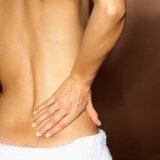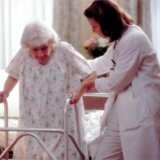Spina bifida: what is it, causes, symptoms, treatment
Each year, approximately 8 million babies (6 percent of newborns) worldwide are born with a congenital disorder, 1,300,000 of whom have a neural tube defect (NTD). This type of birth defect occurs when the neural tube (the structure of the embryo that eventually becomes the brain, spinal cord brain and spine) does not develop normally by the 28th day of pregnancy, resulting in deformity in any area along the entire length tube.
One of the most common forms of neural tube defects is spina bifida, or spina bifida. This condition affects 1 in every 3,000 newborn babies, which is approximately 1,500 cases per year. This can lead to a life-changing disability, but it can be managed with medical care. 90 percent of affected children lead fully fulfilling lives.
Content
- What is Spina Bifida?
- Types of spina bifida
- Causes and risk factors
- Symptoms and Signs
- Common complications of spina bifida
- Diagnostics
- Treatment options
- Early intervention: surgery before or immediately after birth
- General methods of therapy and treatment of complications that have arisen
- How can you prevent spina bifida?
- Forecast
What is Spina Bifida?

Spina bifida, non-closure of the vertebral arch (which in Latin means “Spina bifida") Is a complex neurological birth defect in which part of the neural tube does not close completely during fetal development, which ultimately causes a rupture in the spinal column. Sometimes a sac of cerebrospinal fluid may protrude in the area of the opening. In severe cases, this sac can also hold back some of the spinal cord and nerves, which can become damaged over time.
Spina bifida can occur anywhere along the spine. This can lead to physical and mental impairment, the severity of which may differ for each patient, depending on the type, size and location of the opening in the spine.
As with other neural tube defects, spina bifida develops during the first month of pregnancy. Despite the fact that the pathology has been extensively studied in recent decades, its exact cause is still unknown. Researchers speculate that this condition could be caused by both genetic and environmental factors.
Types of spina bifida
Spina bifida is divided into 3 main types depending on the severity and location of the tear in the spine:
- Spina bifida occulta (SBO) or latent spina bifida - characterized by a small gap in the spine, SBO is considered the mildest form of spina bifida. It does not affect the spinal cord or nerves in most cases, does not cause visible malformations, therefore the term “occulta"Means"hidden"In Latin.
- Meningocele - considered the rarest form of spina bifida, meningocele is a condition in which mening (which is the membrane covering of the spinal cord) protrude through the gap in the spinal column, creating a filled liquid bag. This sac does not contain the spinal cord or nerves, so its prognosis is usually associated with a normal neurological outcome. Meningocele usually occurs in the lower lumbar and lumbosacral regions (see. photo above), however, it can also affect the cervical and thoracic regions.
- Myelomeningocele - also known as "spina bifida cystica" and "open spina bifida", Myelomeningocele is the most severe form of this congenital disorder, with the spinal cord itself pushes out of the gap in the spine, forming a sac, which also contains the meninges and nerves elements. It accounts for 75 percent of reported cases of spina bifida.
Causes and risk factors
It is still unknown what exactly causes spina bifida, but researchers speculate that a combination of the following genetic, environmental and nutritional factors may play a role in its development:
|
Folate deficiency (vitamin B9) - is considered the largest risk factor associated with spina bifida. According to a discussion at the Ciba Foundation (a symposium where the greatest minds gather), vitamin B9 is involved in the methylation cycle and is a cofactor for enzymes used in DNA and RNA synthesis. Consequently, its deficiency can interrupt the reaction of DNA biosynthesis and methylation, which, in turn, prevents the proper closure of the neural tube. |
Family history of DZST. According to a study published in the journal Nature Reviews Disease, a child's risk of developing spina bifida increases by 2-5% if he has an older brother who also has it disease. Second- and third-degree relatives will also have a higher risk of developing the condition. |
|
Diabetes— gestational diabetes was a well-known teratogenic agent that can disrupt the development of the embryo or fetus, causing birth defects such as spina bifida. Poorly controlled gestational diabetes increases the risk of having a baby with NTDs by 6-10%, according to a study published in the Journal of Family and Community Medicine. |
Obesity - In 1996, a study published in the Journal of Epidemiology showed that obese women have almost twice the risk of having a baby with spina bifida. Research published in journal "Pediatrics"also confirms the association of neural tube defects with obesity in pre-pregnancy pregnant women. |
| Certain medications - use of antiepileptic drugs, especially valproic acid and carbamazepine, during pregnancy has been associated with an increased risk spina bifida in infants, as these medications can interfere with the body's ability to utilize folate acid. | Increased body temperature (hyperthermia) - meta-analysis published in American Journal of Epidemiology, shows that maternal hyperthermia in the early stages of pregnancy can predispose the child to DZNT (neural tube defects). |
Symptoms and Signs

The symptoms of spina bifida vary greatly depending on the location of the spina bifida. Common signs associated with each type of spina bifida include:
- Latent spina bifida - Since the spinal cord and nerves are not damaged by the occlusion, it usually does not cause visible symptoms. However, there are cases where babies born with this type of disease have an abnormal hair tuft, a small dimple, or a birthmark at the site of the spinal space.
- Meningocele - this form of the disease is more serious than latent, but less severe than myelomeningocele. It is characterized by a fluid-filled sac containing the meninges that protrude at the site of the spine. It may or may not be covered with a thin layer of skin. Although this does not usually result in nerve damage, there are still cases where it has resulted in minor damage.
- Myelomeningocele Severe spina bifida is also characterized by a fluid-filled sac that protrudes at the site of the spinal cord. However, unlike meningocele, this sac not only holds the meninges, but also the nerves and parts of the spinal cord.
In most cases, the pouch is also not covered with a layer of skin - this exposes and ultimately damages nerves and spinal cord, which leads to partial or complete paralysis of parts of the body below the localization of the spinal cord brain.
In addition to the symptoms mentioned above, complications caused by the disease can also be an indicator of the severity, size, and location of the tear in the spine.
Common complications of spina bifida
There are many complications associated with spina bifida, but not all of them occur in children with this birth defect. Some of the more common complications include:
- Movement problems. Many children with spina bifida experience weakness or paralysis in their lower limbs. The higher the tear in the spine, the more likely it is to have paralysis of the legs. Lack of regular movement also leads to weakening of the muscles in the legs and back, which can ultimately affect bone development and cause deformation or dislocation of the joints. scoliosis and bone fractures.
- Bladder and bowel problems Spina bifida, especially myelomeningocele, can damage the nerves that control the bladder and intestines. This complication usually occurs when the tear is located in the lower part of the spinal cord. Many people with this disease develop urinary incontinence, urinary tract infections, stones in the kidneys, scarring of the kidneys and hydronephrosis - a condition in which the kidneys become stretched and swollen due to the accumulation of urine. Bowel incontinence is also a common problem among people with spina bifida because they cannot properly control the sphincter muscles. This can cause bouts of constipation followed by periods of diarrhea.
- Hydrocephalus - characterized by the accumulation of fluid in the brain, hydrocephalus is a common complication among children born with myelomeningocele. This condition can damage the brain and cause learning difficulties such as short attention spans, reading difficulties, and problems with vision and physical coordination.
- Skin diseases - Damage to nerves can reduce the sensitivity of the skin of the legs, feet, buttocks and back, making it difficult for people with the disease to determine if they have a bruise, wound or blister. This can lead to wound infections and ulcers.
Children with spina bifida are also more prone to latex allergieswhich can cause mild allergic reactions such as watery eyes, rashes, itching, and runny nose. Latex allergy can also cause life-threatening reactions such as anaphylactic shockwhich leads to swelling of the face and airways, making it difficult for the baby to breathe.
Other complications of spina bifida include impaired circulation of cerebrospinal fluid, meningitis, sleep disturbances and breathing problems.
Diagnostics
Most cases of spina bifida are diagnosed before birth with prenatal screening tests (amniocentesis, ultrasound, blood alpha-fetoprotein analysis), which are also aimed at checking for other birth defects. However, these tests are not perfect - some children may test positive for spina bifida, but it doesn't matter were born normal, while a negative prenatal test result could miss the presence of DZNT (defects of nerve tube).
Mild cases of the disease that are not diagnosed during prenatal screening can be detected by postnatal diagnosis. If the doctor suspects that the child has spina bifida, he or she may recommend that the child undergo an ultrasound scan. magnetic resonance imaging (MRI), X-rays or computed tomography (CT) to better examine the spine and scull.
Treatment options
There is no cure for spina bifida. If there are nerves that have been damaged due to a tear in the spine, they cannot be repaired or replaced. However, there are treatment plans that can help reduce the impact of this condition on a child's quality of life. Treatment options depend on the type and severity of spina bifida.
Early intervention: surgery before or immediately after birth

Once a diagnosis is made, especially for myelomeningocele, one of the first treatment options a doctor can offer is prenatal surgery. This procedure should ideally be done before the 26th week of pregnancy and involves opening the uterus to repair the fetal spinal cord.
According to a study published in the journal “Workshops on Pediatric Surgery”, This procedure can help preserve the neurological function of the fetus while reducing the risk of hydrocephalus.
However, fetal surgery can pose significant risks, such as uterine scarring and premature birth, so make sure you discuss its benefits and drawbacks thoroughly with your doctor. This specialized surgery should only be performed by a team of experienced fetal surgery specialists.
Most doctors recommend giving birth to a baby with spina bifida through a cesarean section, especially if find a large sac on the back of the child or have a breech presentation of the fetus, which is quite common in children with myelomeningocele.
If prenatal surgery is not possible, the doctor may recommend that the baby have surgery within 48 hours of birth. During the procedure, the neurosurgeon will place the protruding spinal cord and tissue back in their correct place. The opening in the baby's back will then be closed and covered with muscle and skin. Performing this procedure right after birth helps reduce the chance of infection and protects the nerves and spinal cord from injury.
General methods of therapy and treatment of complications that have arisen
It is important for a child with spina bifida to have a treatment plan that will help manage complications, allowing them to achieve full functionality and independence later in life. Common treatments and treatments for complications include:
|
Hydrocephalus treatment - If a child with the disease also develops hydrocephalus, they may need postpartum surgery to have a ventricular shunt implanted. This procedure allows excess fluid in the brain to drain to another part of the body, usually the abdomen. It also helps protect the brain from too much pressure. Additional surgery may be required at a later age if the shunt becomes clogged or becomes infected. |
Physiotherapy - it is important that a child with spina bifida undergo physical therapy as they get older, as it helps to ensure proper mobility, suppress bone deformation and avoid muscle weakening legs. |
|
Occupational therapy - helps patients find ways to carry out daily activities despite potential disruptions. The therapist usually recommends the use of adaptive equipment and alternative methods to help the child perform activities. |
Mobile funds. Patients with weak leg muscles may use orthopedic braces, splints, and other walking aids to maintain mobility, while those who are completely unable to use their legs usually require a wheelchair armchair. |
| Orthopedic surgery - Corrective orthopedic surgery is recommended for patients with spina bifida who also have problems with bone development such as clubfoot, scoliosis and hip dislocation. |
Bladder treatment. Urinary incontinence can be treated with urinary catheterization, which involves inserting a flexible tube into the bladder so that urine can drain through it into a drainage bag. Bladder surgery may also be recommended to enlarge the bladder and improve its ability to retain urine. There are additional steps you can take to help improve incontinence urine, such as doing Kegel exercises, circular hips and body movements, and side-to-side movements side. |
|
Bowel management - bowel problems, especially constipation, are common among people with this disease. This condition is usually treated with anal irrigation, a procedure in which water is pumped into the anus using special equipment to cleanse the intestines. Surgical procedures such as antegrade enema and colostomy may also be recommended. To naturally improve bowel movements, it is important to drink enough water and eat more fiber-rich foods. |
How can you prevent spina bifida?
Because folate deficiency plays a very important role in neural tube defects, women who are planning a pregnancy folate supplements are recommended every day for at least one month prior to conception and continuing throughout the first trimester pregnancy.
Most folate supplements available today contain a synthetic version of this vitamin, which is known as folic acid. Be aware that folate and folic acid are not the samethough they are often used interchangeably. Folic acid is metabolized differently in the body, and studies have shown that excessive amounts of it can increase the risk of developing colorectal cancer and cardiovascular disease.
If you would like to use folate supplements, consider taking it in the form of L-methylfolate (5-MTHF), which is the biologically active form of this vitamin. Keep in mind that real foods are still the best sources of folate. If you are planning on getting pregnant soon, be sure to add folate-rich foods to your diet:
| Spinach | Endive (Chicory salad) | Lettuce leaves |
| Asparagus | Mustard salad | Turnip greens |
If you have diabetes, are obese, or are taking anticonvulsants, be sure to talk to your doctor to help you plan your pregnancy and determine how much vitamin B9 supplements you need accept.
Forecast
Spina bifida has always been considered a complex birth defect with a low probability of survival. But with proper treatment and a stable support system, the life expectancy of some children with this disease can be significantly increased, which will allow they live to adulthood and lead a fulfilling life despite the physical, mental, social and emotional problems they may have collide.



